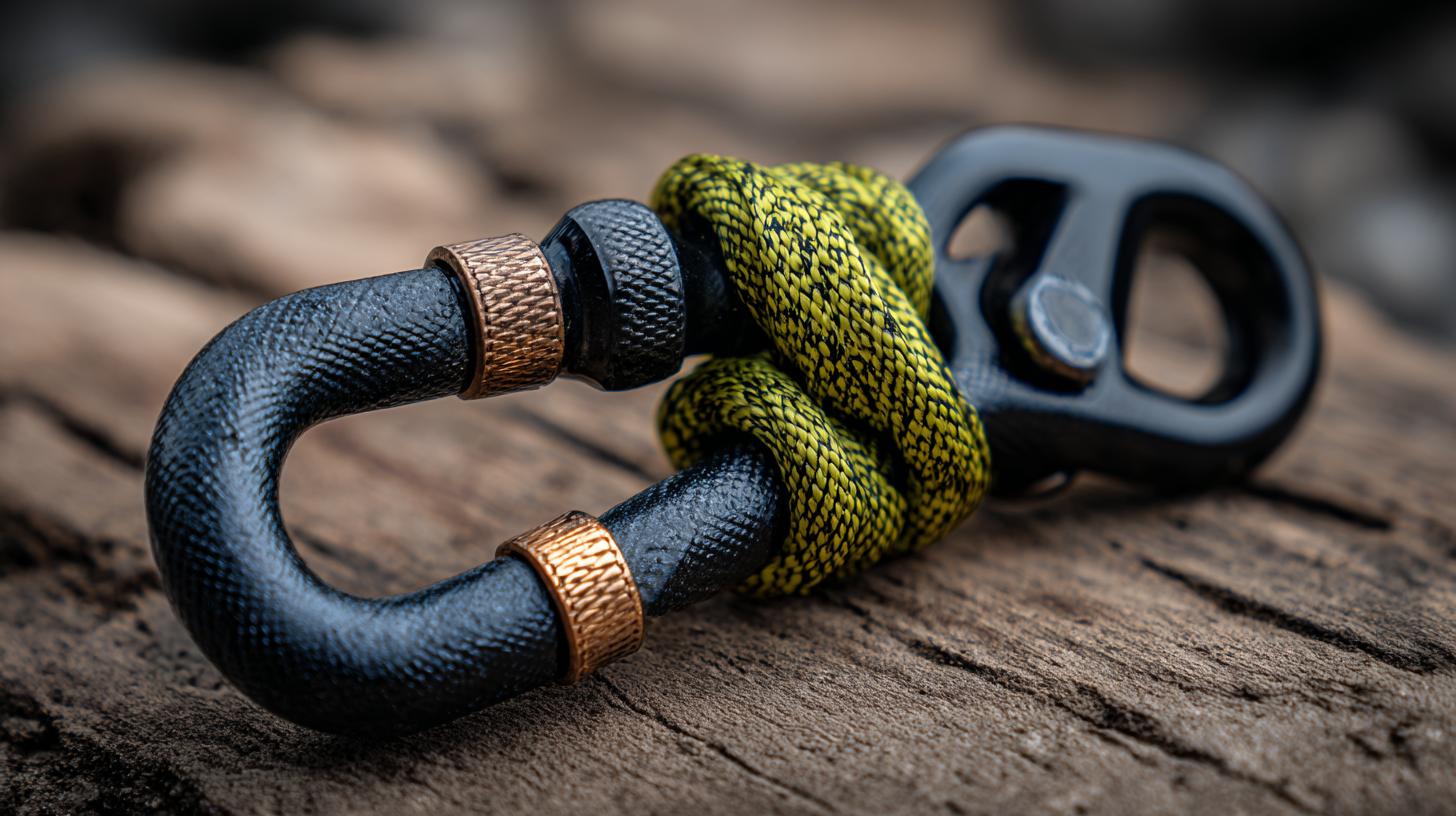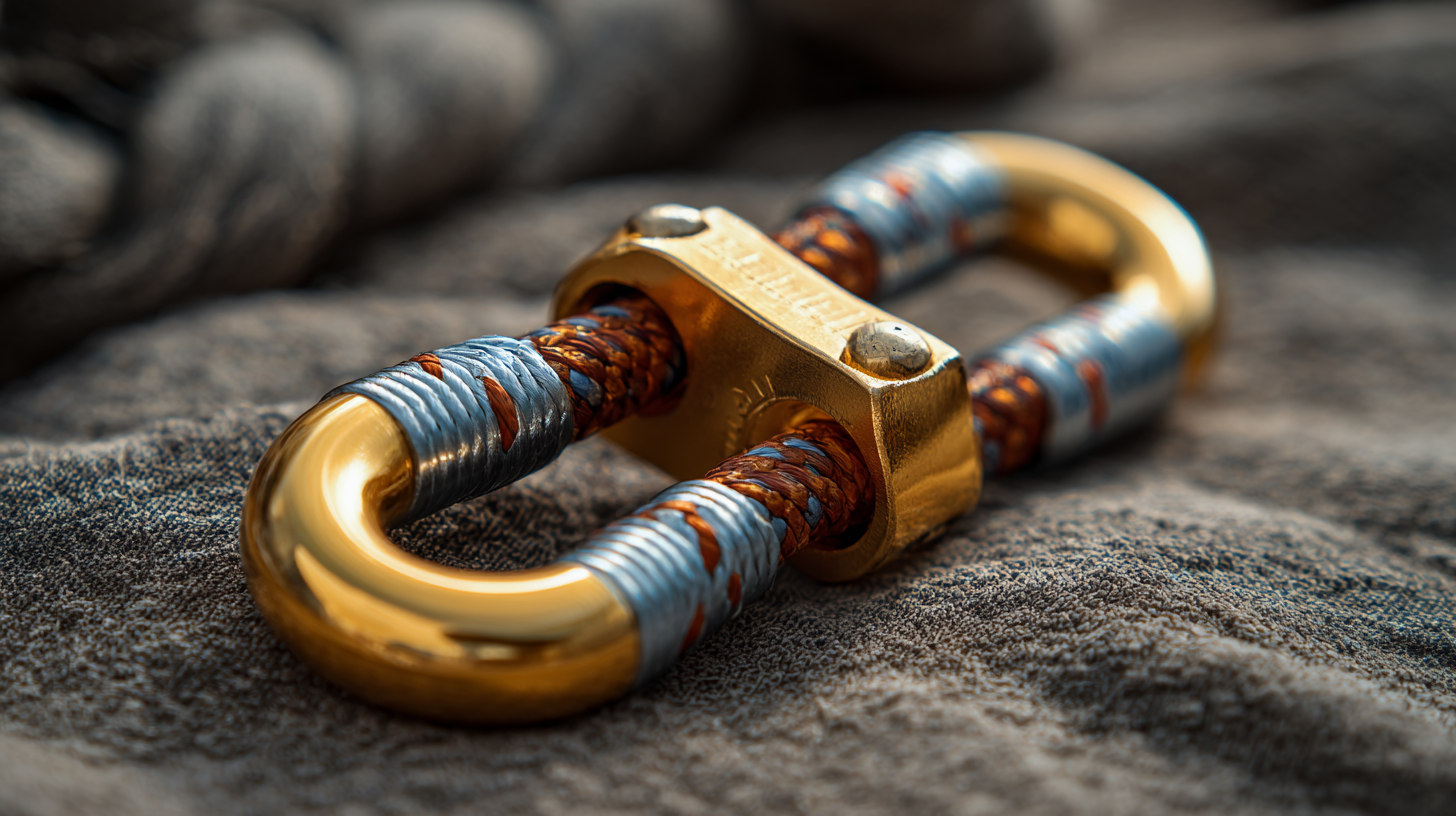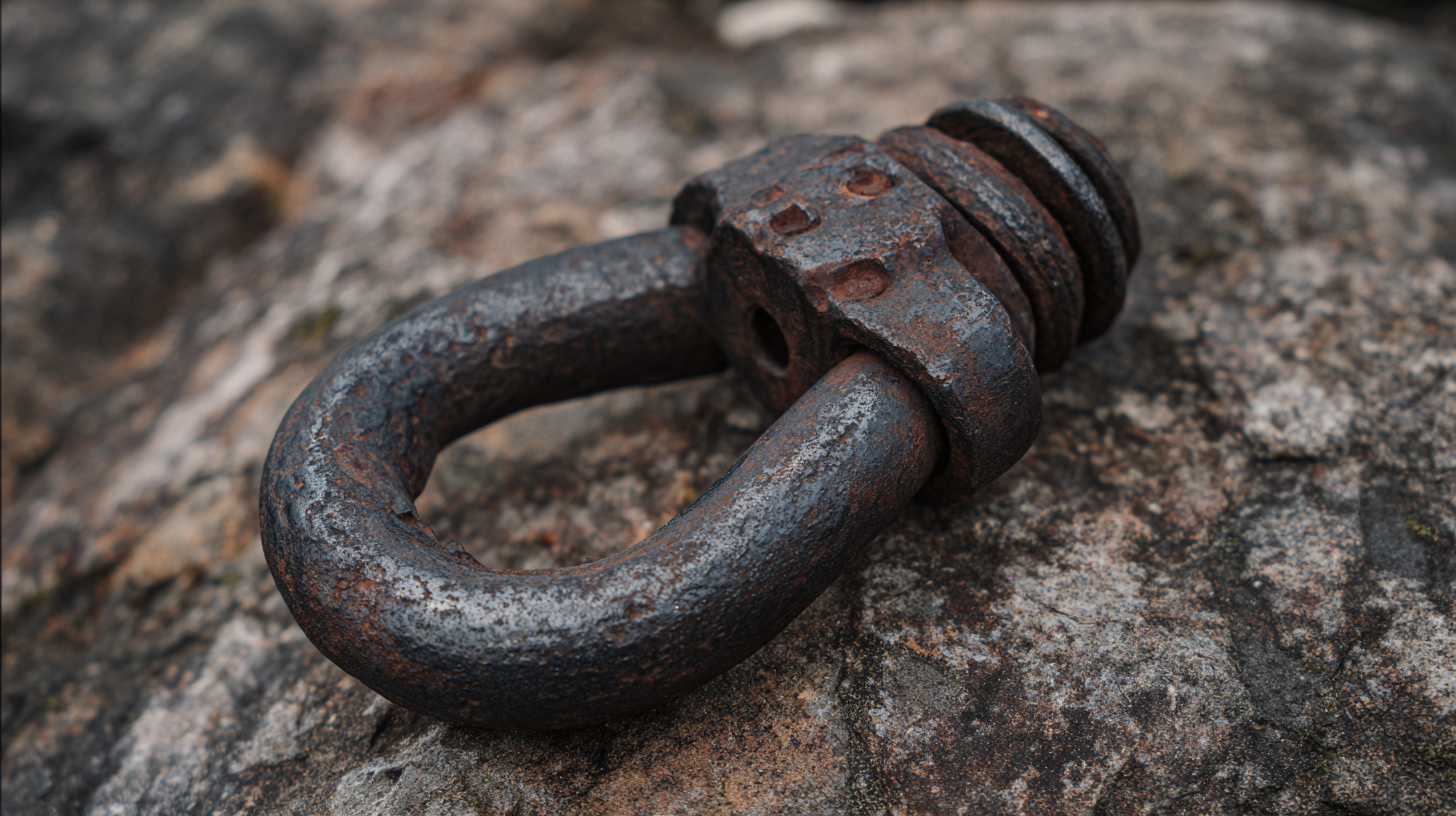 In the world of rigging and lifting, choosing the right components is essential for safety and efficiency. Among these components, the Bow Shackle stands out due to its versatility and strength. According to a report from the Industrial Rigging and Lifting Association, improper selection and use of shackles can lead to up to 40% of lifting incidents, highlighting the critical importance of making informed choices. Bow Shackles, designed with a rounded shape, provide a secure attachment point for loads, distributing weight evenly and reducing the risk of failure. Furthermore, studies show that using high-quality Bow Shackles can enhance load capacity by up to 20%, making them a preferred choice in various industries including construction, marine, and automotive. With these compelling reasons, it becomes apparent that selecting the best Bow Shackle is not just a matter of preference, but a crucial decision that impacts both safety and performance in critical lifting operations.
In the world of rigging and lifting, choosing the right components is essential for safety and efficiency. Among these components, the Bow Shackle stands out due to its versatility and strength. According to a report from the Industrial Rigging and Lifting Association, improper selection and use of shackles can lead to up to 40% of lifting incidents, highlighting the critical importance of making informed choices. Bow Shackles, designed with a rounded shape, provide a secure attachment point for loads, distributing weight evenly and reducing the risk of failure. Furthermore, studies show that using high-quality Bow Shackles can enhance load capacity by up to 20%, making them a preferred choice in various industries including construction, marine, and automotive. With these compelling reasons, it becomes apparent that selecting the best Bow Shackle is not just a matter of preference, but a crucial decision that impacts both safety and performance in critical lifting operations.
Bow shackles are essential components in various rigging applications, playing a crucial role in connecting loads. Their distinctive shape allows for versatility and strength, making them a popular choice among riggers and those in the construction industry. Understanding the importance of selecting the right bow shackle can significantly impact the safety and efficiency of your operations.
When choosing a bow shackle, it’s vital to consider the load capacity. Make sure to select a shackle that is rated for at least 1.5 times the maximum load you expect to lift. This provides a safety margin that is critical in preventing equipment failure. Additionally, always inspect shackles for any signs of wear or damage before use; any compromised shackle can lead to severe accidents.
Another important tip is to choose the right material for your bow shackle based on the environment in which it will be used. Stainless steel shackles are ideal for corrosive environments, while carbon steel options provide great strength for general lifting tasks. Always ensure that the bow shackle fits well with other rigging elements, such as hooks and chains, to maintain a secure and stable lift.

When selecting the best bow shackle for your needs, it's crucial to focus on key features that ensure both security and functionality. One of the most important aspects to consider is the material of the shackle. Opt for high-quality materials that offer durability against wear and tear, as well as resistance to corrosion. A bow shackle made from forged steel not only enhances strength but also extends the lifespan of the product, making it a valuable investment for your activities.
Another essential feature to look for is the shackle size and opening style. Depending on your application—be it marine, industrial, or recreational—choosing the right size will ensure it fits your gear properly, providing maximum safety. Additionally, consider whether the shackle has a screw pin or a safety latch. A screw pin can offer a more secure hold, while a safety latch can prevent accidental openings during use.
**Tips:** When purchasing a bow shackle, always check for relevant certifications and weight ratings to ensure it meets your specific needs. It's also advisable to read customer reviews to gauge the performance and reliability of the shackle in real-world scenarios. Finally, don’t forget about the ease of use; choose a design that allows for quick attachments and detachments to streamline your tasks.
| Feature | Description | Importance | Recommendations |
|---|---|---|---|
| Material | Select shackles made from high-quality materials like stainless steel or alloy. | Durability and resistance to corrosion. | Look for AISI 316 stainless steel for marine use. |
| Load Limit | Always choose a shackle that matches or exceeds your load requirements. | Safety and security during lifting. | Check for a minimum safety factor of 5:1. |
| Pin Type | Choose between screwed, bolt, or safety pin types based on usage. | Ease of use and security. | Screw pins for frequent use, safety pins for fixed applications. |
| Size | Shackles come in various sizes; select the appropriate size for your system. | Compatibility with other rigging hardware. | Ensure it fits your ropes or connectors snugly. |
| Certification | Look for shackles that are marked and certified for safety standards. | Compliance with industry regulations. | Check for CE and ASTM certifications. |
When selecting a bow shackle, understanding industry standards and certifications is crucial for ensuring safety and reliability. ISO certifications, such as ISO 9001:2015 and ISO 27001:2013, play a vital role in assuring quality management systems. These standards provide a framework for organizations to improve their processes, reduce risks, and enhance customer satisfaction. The adherence to such certifications makes a significant difference, as it indicates a commitment to quality and the capability to meet both regulatory and customer demands.
However, recent events, like the quality issues observed in aviation sectors, highlight the need for continual scrutiny of ISO certification processes. For instance, despite compliance with rigorous standards such as AS 9100, critical flaws can still emerge, prompting a re-evaluation of the certification expectations. This scenario underlines the importance of selecting products, like bow shackles, from manufacturers who not only hold these certifications but also demonstrate a proactive approach to addressing and resolving quality issues. Hence, understanding these certifications can guide consumers in making informed decisions that contribute to safety and performance in their applications.
When selecting the best bow shackle for your needs, it is essential to understand the various types available and their specific applications. Common types include standard bow shackles, which are generally made of steel and known for their strength, and lightweight aluminum options, preferred for applications where weight is a crucial factor. According to the National Association of Manufacturers, steel shackles can withstand loads up to 10 times their weight, making them ideal for heavy-duty operations.

Another option is the D-shackle, which offers a slightly different design geared towards specialized tasks. This type provides superior load distribution and is commonly used in marine applications where corrosion resistance is vital. A study by the American Society of Testing and Materials indicates that bow shackles tend to perform reliably under varying environmental conditions, which increases their appeal among users in harsh settings.
Tips: When choosing a bow shackle, always consult the manufacturer's load rating and ensure it meets or exceeds your specific lifting requirements. Additionally, consider the material composition for environmental factors—stainless steel may be necessary for saline conditions. Lastly, regularly inspect your shackles for signs of wear and deformation to maintain safety in your operations.
When selecting a bow shackle, understanding how to maintain it properly is crucial for ensuring its longevity. Regular maintenance not only enhances the performance of your shackles but also prevents potential failures during crucial operations. According to the American National Standards Institute (ANSI), properly maintained rigging equipment can increase operational efficiency by up to 20%. This emphasizes the necessity of adhering to maintenance tips for bow shackles to sustain their functionality over time.
One fundamental tip is to inspect your bow shackles regularly for signs of wear or damage. Look for cracks, corrosion, or deformation that could compromise their integrity. Recognizing these issues early can prevent catastrophic failures that may result from using compromised shackles. Additionally, lubricating the shackle pin and threads regularly with a suitable marine-grade lubricant can minimize wear and tear, allowing for smoother operation and easier removal after use.
Another important aspect of maintenance is proper storage. Keep your bow shackles in a dry, sheltered location, ideally in a dedicated toolbox to avoid exposure to moisture or contaminants that could promote corrosion. The International Association of Drilling Contractors (IADC) recommends that shackles be stored in controlled environments where temperature and humidity can be monitored. By implementing these simple yet effective maintenance tips, you can significantly extend the lifespan of your bow shackles, ensuring safety and efficiency in your operations.
